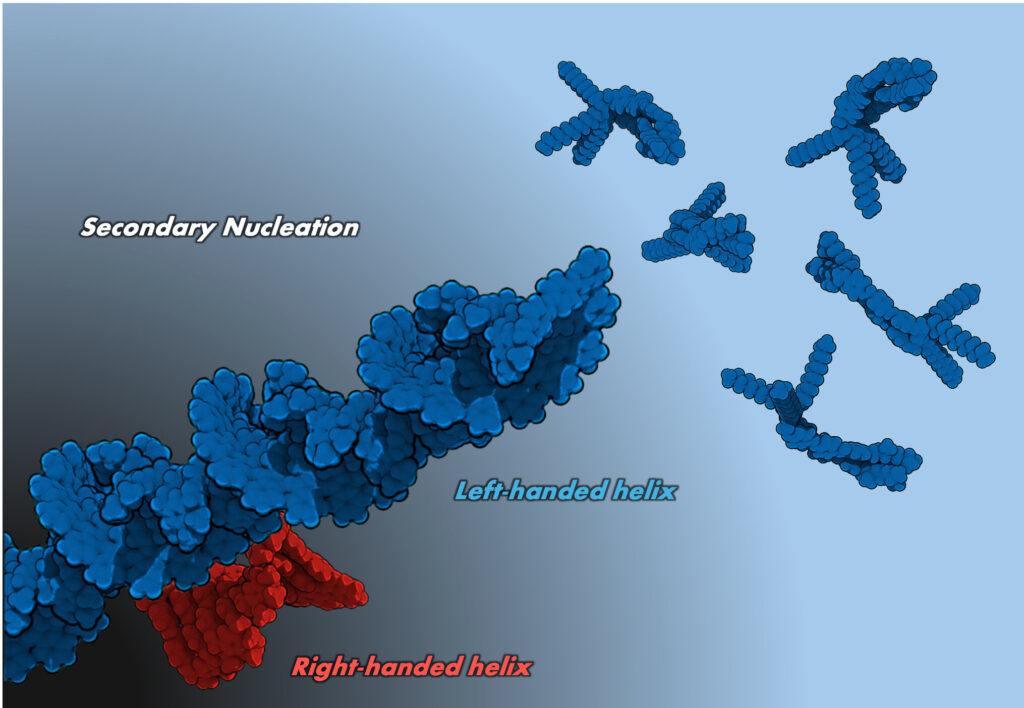Self-assembly or self-organization in molecular science refers to the phenomena where molecules spontaneously gather and form ordered structures, a unique property of materials used to develop optical and electronic materials.
In a step towards fine-tuning this property, researchers from Japan successfully elucidated a technique where a small amount of residual aggregates drastically altered the self-assembly process of photo-responsive molecules.
The research team was led by Professor Shiki Yagai from the Graduate School of Engineering, Chiba University, including Assistant Professor Takuho Saito from Nagoya University (at the time of research), Mr. Daisuke Inuoe, and Assistant Professor Yuichi Kitamoto from Tohoku University, as major contributors to this work.
The findings of their study were published online in Nature Nanotechnology.
In recent years, there has been an increasing focus in research on controlling the size and hierarchical structures of self-assembled aggregates, which could help achieve aggregates with desired properties. However, self-assembly is a dynamic process and requires precise control.
“During the process of self-assembly, the molecules repeatedly continue to associate and dissociate,” explains Prof. Yagai, “Even minute impurities or slight changes in the conditions can impact the final structure of the formed aggregates.”
For the study, the research team focused on the self-assembly of a chiral, photoresponsive azobenzene that naturally forms left-handed helical aggregates. The team discovered that the presence of a small amount of residual aggregates within the solution induces a drastic change in the assembly process and leads to the formation of right-handed helical aggregates instead.
Moreover, being photoresponsive, controlling the exposure to light also modifies the timing of molecular assembly. Using precise control of these two properties together, the researchers successfully manipulated the formation of either left-handed or right-handed helical aggregates as required.
In spectroscopic and molecular modeling studies, the team found that when the scissor-shaped azobenzene molecule is dissolved in an organic solvent at room temperature, it forms a closed scissor-like folded structure that further extends into a helical assembly.
Prof. Yagai explains the formation of left-handed assembly, saying, “The molecule contains a carbon atom that has four different atomic groups and therefore exhibits chirality. These molecules fold like left-handed scissors and twist to form a left-handed helical stacking of the assembly.”
Since these are photoresponsive molecules, when the stacked helical structures are exposed to weak ultraviolet (UV) light, the helical assembly disassembles back into individual molecules, and upon subsequent exposure to visible light, the molecules reassemble into helical structures again.
Interestingly, under certain conditions, the resulting helical aggregates were found to be right-handed instead of left-handed, and exposure to stronger UV light followed by visible light led to the regeneration of the original left-handed helical aggregates.
By closely investigating this mechanism, the team found that when solutions were exposed to weak UV light, there was a minute amount of residual left-handed helical aggregates that remained unchanged, and these aggregates acted as nucleation sites forming oppositely directed helical assemblies.
“This remarkable phenomenon is called ‘secondary nucleation,” which explains why meta-stable right-handed aggregates are preferably formed instead of left-handed aggregates,” says Prof. Yagai.
In addition to this, the team also discovered the role of light intensity in the molecular assembly process.
Prof. Yagai explains, “We identified that the intensity of visible light potentially affected the timing of the assembly. Strong visible light promoted rapid assembly while minimizing the influence of the residual aggregates. In contrast, weaker intensity magnifies the effect of the residual aggregates.”
Therefore, by optimizing the intensities of UV and visible light, the researchers successfully controlled the switching between left- and right-handed helical structures, which were dependent on the influence of the residual aggregates.
Moreover, it was also found that the stable left-handed aggregates and meta-stable right-handed aggregates also exhibit opposite electron spin polarization, which signifies the tuning of electronic characteristics of the helices.
Overall, this study aimed to explore the critical role of residual aggregates and explained how light-enabled fine-tuning can result in the fabrication of novel functional materials, giving promising insights into the field of material science.


